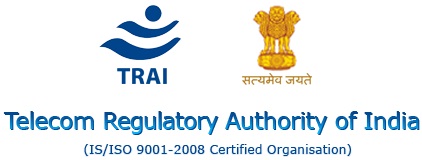
The Telecom Regualatory Authority of India on 3rd June, 2013 released Consultation Paper No.: 5/2013 titled “Monopoly/Market dominance in Cable TV services”. The paper was in response to a reference received on 12th December, 2012 from the Ministry of Information and Broadcasting seeking TRAI’s recommendations under Section 11(1)(a) of T.R.A.I. Act.
With this post I aim to proffer answers to the questions raised by the Regulator and aim to provide suggestions as requested by them.
1. Do you agree that there is a need to address the issue of monopoly/market dominance in cable TV distribution? In case the answer is in the negative, please elaborate with justification as to how the ill effects of monopoly/market dominance can be addressed?
Absolutely yes. Ironically, it is T.R.A.I. itself which has caused the problem of dominance in the first place. Earlier, before the implementation of Digital Access Service (D.A.S.), i.e., what is commonly referred to as the “Set Top Box”, Cable TV could either be analogue or non-addressable viz. the cable TV signal is not digital. In the case of non-addressable platforms, Local Cable Operators (L.C.O.’s) had the option of downlinking Free to Air (F.T.A.) channels directly from broadcasters without the help from Multi System Operators (M.S.O.’s). Pay channels were ofcourse obtained by LCO’s through M.S.O.’s as these are transmitted by broadcasters in encrypted form as required. However, after the amendment of the Cable T.V. Act, 1995 in November 2011, it became obligatory for each cable operator to transmit or re-transmit programs of any channel in encrypted form through a digital addressable system. Consequently, only M.S.O.’s can receive signals from the broadcasters as per the Cable TV Networks Rules, 1994 as amended on 28th April 2012. Therefore, as per the paper,
“The MSO maintains a Subscriber Management System (SMS) where details about each customer and his/her channel preferences are stored. All the channels are now decrypted at the customer end through a set top box (STB) programmed by the MSO as per details in the Subscriber Management System. Therefore, in the DAS environment, MSOs play a key role in distribution of both FTA and pay channels.”
Which brings us to the condition which must be imposed to the above affirmative, that this dominance is predominantly at the State level. There does not appear to be a national dominance as most MSO’s operate on a regional basis. Therefore, the relevant market while examining such a question of dominance must be taken to be a respective state. I had highlighted this point in an earlier post while discussing similar issues before the C.C.I.
Also, since at present D.A.S. has still not been fully implemented across the entire country, it may be difficult to determine the true level of dominance of M.S.O.’s in each state. Till that time, the T.R.A.I. may consider our suggestion on the substitutive ability of the services as enumerated in the earlier post.
2.Do you agree that the state should be the relevant market for measuring market power in the cable TV sector? If the answer is in the negative, please suggest what should be the relevant market for measuring market power? Please elaborate your response with justifications.
Yes. The reasoning for which has already been elaborated above.
3. To curb market dominance and monopolistic trends, should restrictions in the relevant cable TV market be:
(i) Based on area of operation?
(ii) Based on market share?
(iii) Any other?
Please elaborate your response with justifications.
At the outset, I feel ex-ante restrictions are not the best method of tackling dominance in the sector as not only could they hurt competition compliance but experience shows it is often difficult to predict or theorize the effects or consequences of such regulations and this generally results in a huge spate of litigation. However, if such regulations are to be implemented, then they should NOT be based on the market share of an M.S.O. since it would be a herculean task to ensure competitiveness through regulations in each separate state (since the market share would be based on each specific state.) Moreover, market shares are subject to changes through regular competitiveness and acquisitions. Lastly, it is a well accepted principle of competition law, and which the T.R.A.I. should also follow, that dominance itself is not considered an offence but an abuse of that dominance is considered an infringement of competition law. Rather, it would be better to draft certain general rules on abuse of dominance in the Cable TV sector which may be enforced on an ex-post facto basis.
To be Contd.


